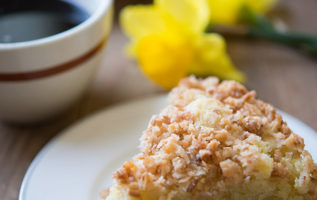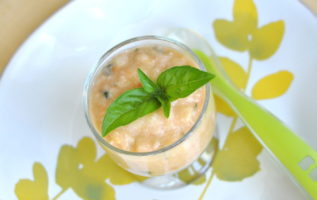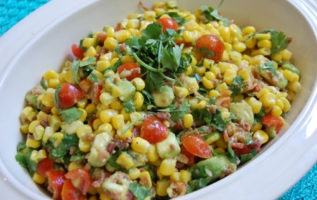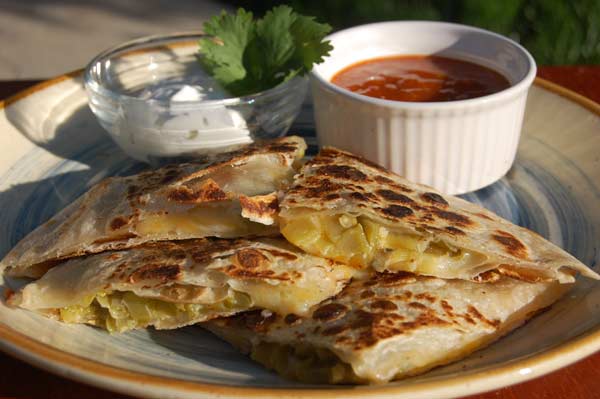
There are some things that one can’t help but bristle at upon the notion of eating. Sure, we’ve all heard about the “delicacies” involving insects and offal in other countries, but what I bring to the table here is much simpler in nature yet can be just as confounding for the uninitiated: Cactus.
That’s right — those desert-loving plants known for their sharp spines can actually be eaten.
Two of the most popular edible portions of cacti are the pads, called “nopals,” and the pears, cactus fruit that in Spanish is known as “tuna.” The former are the flat, broad portions that look like paddles. Once their needles are removed, they can be grilled, baked or simmered. The latter can be peeled and eaten as is. Their delicious fruit is surprisingly sweet, with a texture that’s a cross between a kiwi and a pear. Fresh cactus pads and cactus pears can be found at Hispanic markets such as Northgate, as well as some well-stocked mainstream grocers. Thankfully, the work of removing the needles has usually already been done.
When it comes to the pads, the easiest way for those new to cactus to buy and use them is in prepared form, bottled in jars with either a pickling solution or just salted water. These bottled strips of the paddle, often called “nopalitos,” can be found in the Hispanic section of most major mainstream grocery markets. Cactus pears can be a little trickier to find, but they’re worth seeking out. Again, a trip to a Hispanic market should yield success. All they require for immediate eating is to peel their thick outer skin with a knife and enjoy the luscious fruit inside, including the crunchy black seeds. Feel for ones that are slightly soft.
Both forms of cactus are inexpensive. Bottles are usually $3 or less, and I recently purchased cactus pears for just 79 cents a pound at a local Hispanic grocer.
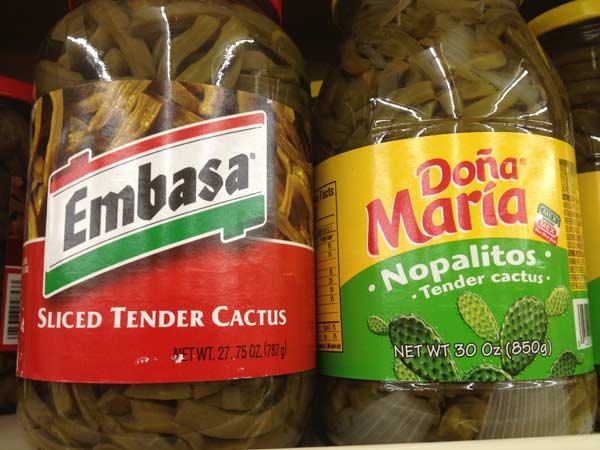
So what do you do with the stuff?
Nopales’ mild, earthy taste and dark-green hue add depth to a variety of dishes, from scrambled eggs to stew. Many of us in Southern California rightfully equate them with various Mexican recipes. I treat diced nopal similar to a mild green chile, using it in place of or in combination with the similar-looking peppers. Note that cactus paddles’ soft flesh can be glutinous like okra. Rinsing under cold water before using helps reduce the sticky factor. The fruit of fresh cactus pear, meanwhile, makes for a surprisingly sweet and refreshing dessert or snack, with no rinsing necessary. In my house, we even include it in smoothies.
For this introduction to cactus, we’ll use bottled nopalitos in a quesadilla, and fresh cactus pear in a quick and easy fruit salad that I kiddingly refer to as “tuna” salad. Ready to rethink your notions about cactus? Let’s put some to tasty use in two recipes.
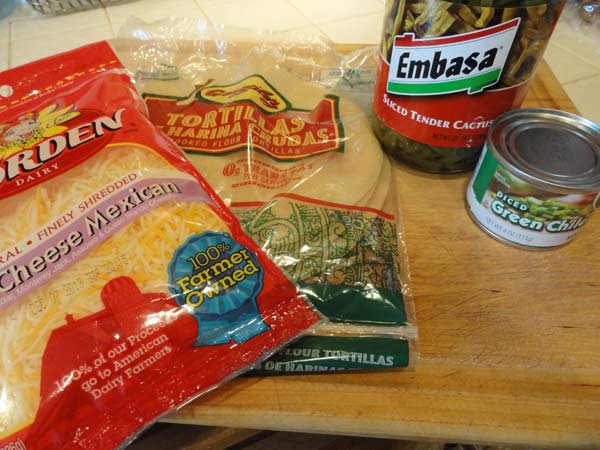
CACTUS QUESADILLA
(Makes 2 servings)
- 1 cup nopalitos, rinsed and diced
- 4-ounce can of diced green chiles
- 4 flour tortillas
- 2 cups Mexican cheese blend, with extra in reserve if desired
- Garnish: salsa, sour cream and fresh cilantro
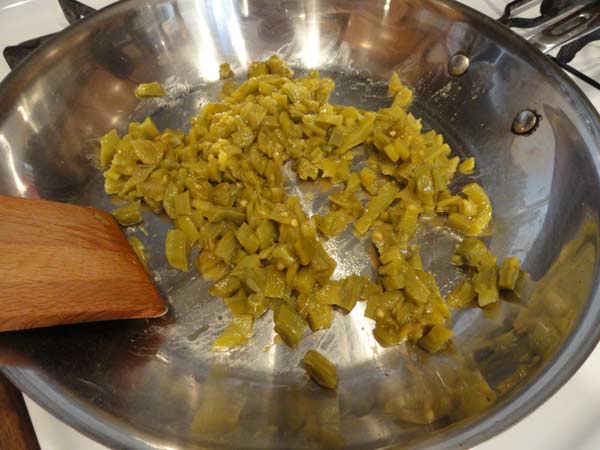
Step 1: Heat a 10-inch or larger pan over medium, add the diced cactus and chiles. Cook until hot, then transfer to a bowl and reserve.
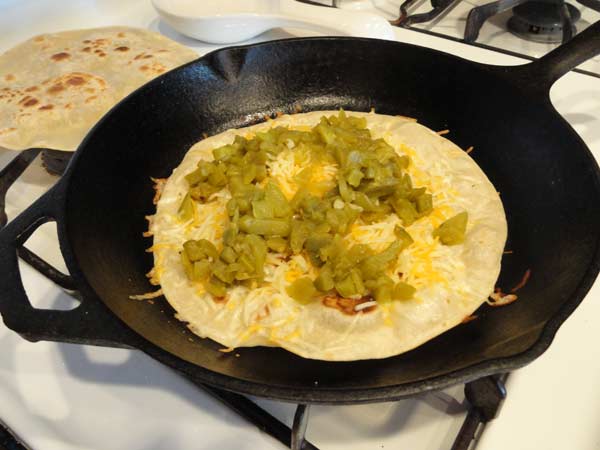
Step 2: In the same pan (once cleaned) or another, heat both sides of a tortilla until hot. Reserve and put another tortilla in the pan, heat and flip. Now add half the cheese and half the cactus/chile mixture.
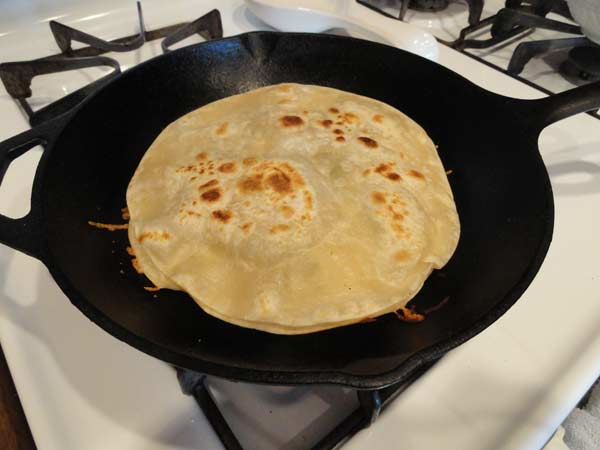
Step 3: Put the pre-heated tortilla on top, flip and cook until the cheese melts.
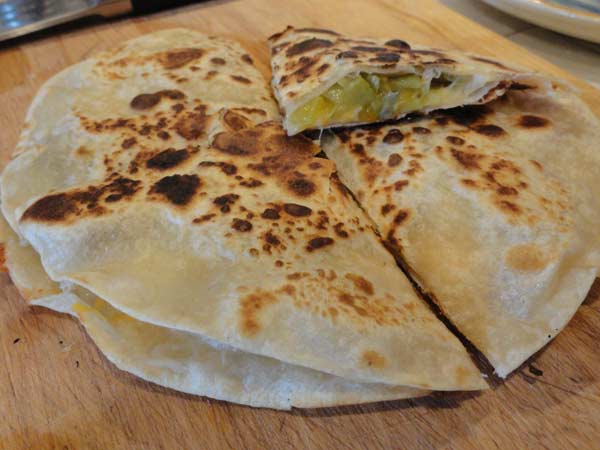
Step: 4: Unload the quesadilla from the pan and repeat for the second one. When finished, quarter the quesadillas and serve with salsa, sour cream or your favorite condiment.
Now let’s taste the sweeter side of cactus with this recipe:
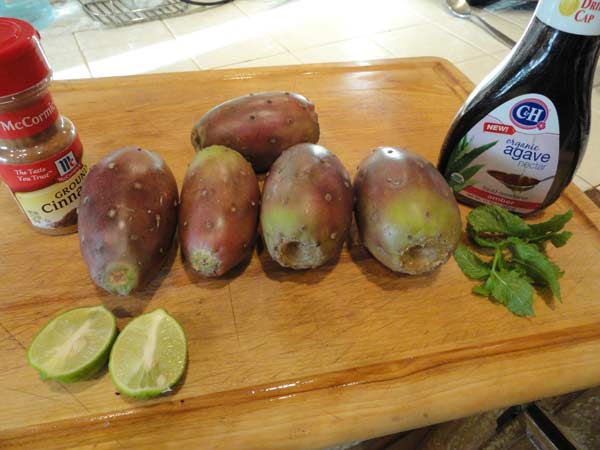
CACTUS FRUIT SALAD
(Makes 2 servings)
- 5 cactus pears, peeled and diced into chunks
- 1 tablespoon fresh mint, finely chopped
- 1 tablespoon agave syrup
- 1/8 teaspoon ground cinnamon
- Juice of 1 small lime
- Garnish: sprig of fresh mint
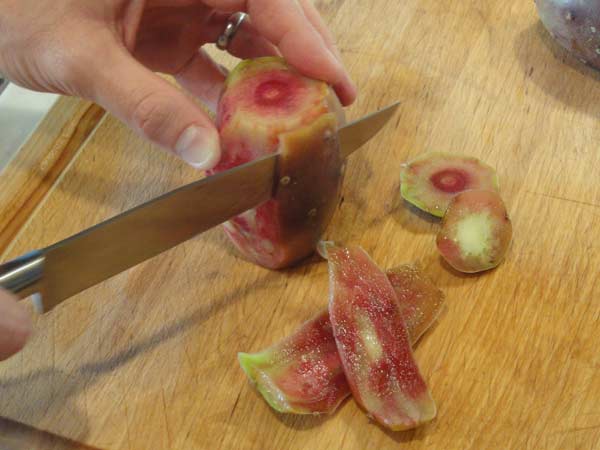
Step 1: Cut the cactus pears by first trimming the top and bottom, then standing upright and carefully trimming the skin down the sides with a small knife.
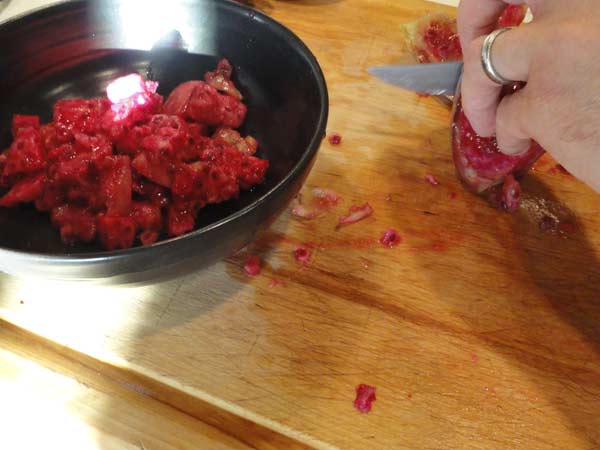
Step 2: Dice the cactus fruit into chunks and put in a bowl. Now chop the mint and add.
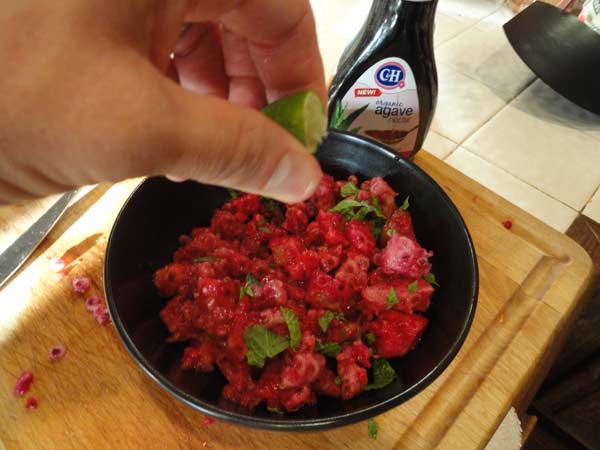
Step 3: Add the agave syrup, lime juice and cinnamon, and mix well. Taste and adjust seasonings as desired. Divide into bowls and enjoy. If you’re feeling especially indulgent, top with a bit of whipped cream.
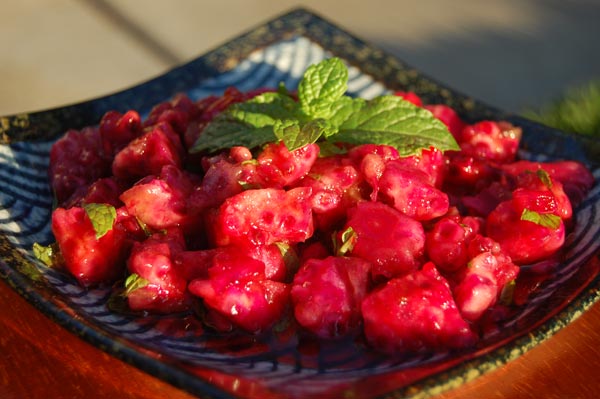
Source: iwanttocook.com (defunct blog)





















